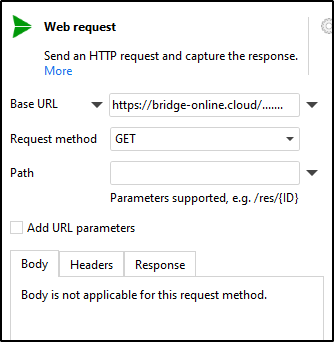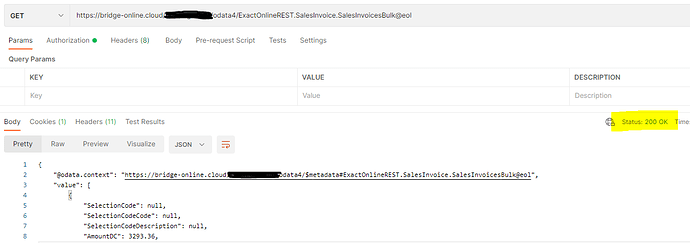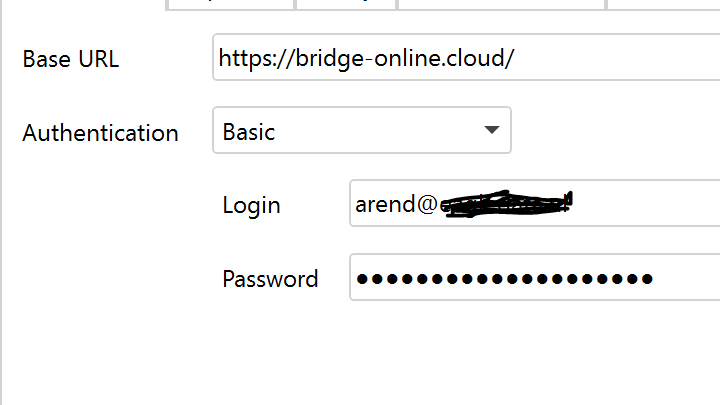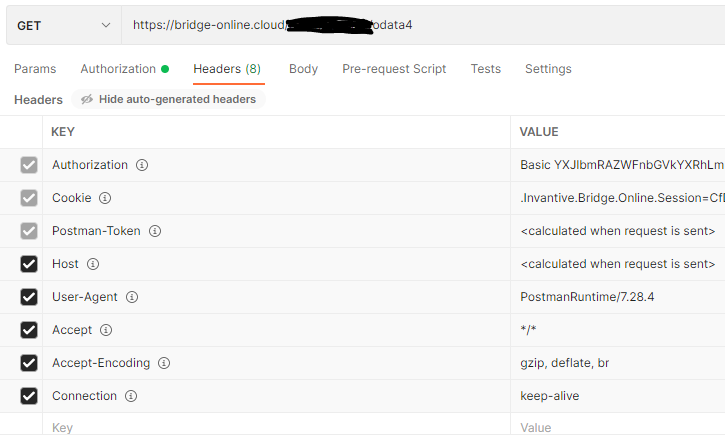New to Community here! Is there a way to import data from OData Feed (as it can be done in Excel and PowerBI)? Or a workaround to perhaps import the dataset from PowerBI? Thanks!
@Lucinda welcome to the Community, and thanks for the suggestion!
You can do OData requests using the “Web Request” action in EasyMorph. The action performs low-level HTTP requests, so you will have to construct request URLs in the OData format manually, using the functions and expressions in EasyMorph.
Thanks a lot for your quick reply! I’ll give it a shot!
Hi there, can you give an example of how such a web request would look like? I have an Odata link working with username and password and I can’t get it working.
Do you need any more details to give some advise on this, pls let me know.
hi FYI, i tried to replicate the request in Postman, which succeeded:
In the Authorization I put the Basic Auth details, and it gives me result as you can see (status 200 ok).
Replicating this in Easymorph gives:
Unauthorized… Somehow it looks like it doesn’t take the Auth details.
Hi Arend,
If it succeeded in Postman there is no reason it won’t work in EasyMorph.
Make sure that authentication in EasyMorph’s connector is configured the same way as in Postman.
If it still doesn’t work, can you please post screenshots of:
- Request authentication tab in Postman
- Request headers tab in Postman
- Connector settings in EasyMorph
- Web request action settings in EasyMorph with the Header tab open
Hi @dgudkov, see attached!
[Attachment removed]
Authentication looks correct. Some services may return “401 Unauthorized” when the URL is incorrect.
Try replacing @ with %40 so that the request URL ends with %40eol.
Hi Dmitry,
This unfortunately didn´t do the trick… I keep getting the 401. I checked again that the password is correct and that´s the case. Do you have any other suggestions?
Try pasting a copy of the Web Request action before it and running both actions in one run (i.e. not run one, stop, then run the other one).
One of the screenshots that you posted shows a session cookie sent in the 401 response. It could be that the target web service uses a rare form of challenge-initiated authentication. In this case, the 1st request receives a session cookie that must be sent with the authentication header in the 2nd request.
sorry, doesn’t work.
Could it have to do with the fact that the headers that are in the Postman request, are all auto-generated.
2 of them have the value:
by the way, if I try this in the browser, it also works fine…
It looks like we need to adjust the way EasyMorph handles the Basic auth.
Meanwhile, can you please try the following:
Before the Web Request action insert one more Web Request configured as follows:
- Use URL instead of connector
- The HTTP method is GET
- The URL path is
The new Web Request action should look similar to below:

Run both Web Request actions together in a single run.
Thanks for helping me out. It turns out the header key User-Agent was obliged.



